
views
Choosing What to Feed Your Bearded Dragon
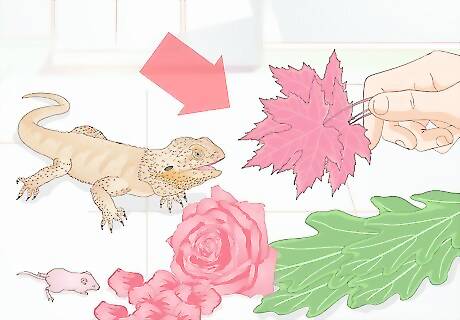
Familiarize yourself with what bearded dragons eat. Bearded dragons are omnivores, which means that they have a diet comprised of both plant and animal products. Beardies can also be fed baby mice (pinkies) occasionally. In addition to insects and raw produce, bearded dragons can also eat some edible plants including carnation petals, clover, geranium flowers, maple leaves, and rose petals.
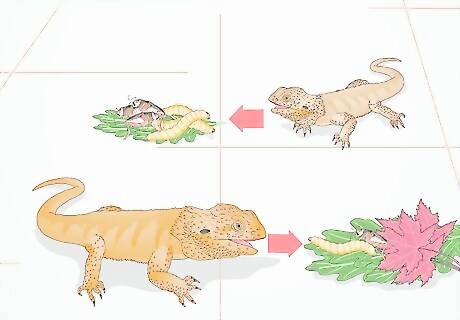
Feed juvenile and adult bearded dragons different ratios. Juvenile bearded dragons require more meat-based protein than adults do, so they should be fed more insects and fewer plant products than adult bearded dragons. A bearded dragon is no longer considered a juvenile when it reaches approximately eight months old. The correct ratio for juvenile bearded dragons is 70% insects and 30% plants, while the ratio for adult bearded dragons is the opposite: 30% insects and 70% plants.
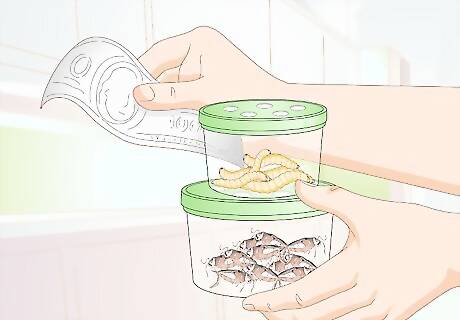
Purchase some insects. Purchase a few specimens from a pet store (don’t collect them from nature because they could be infested with parasites) and keep them in a small aquarium cage with a secure lid so they can’t escape. You should feed the insects vitamin-rich foods like carrots, legumes, apples, broccoli, and grain cereals to in turn give your bearded dragon added nutrition. Some insects, like fireflies, are poisonous to bearded dragons, so be careful to only feed them approved insects and food. Super worms and mealworms can get stuck in bearded dragons' digestive tracts, so be sure to avoid these. Some good insects to choose from include: Crickets Dubia roaches Earthworms Silkworms Cockroaches
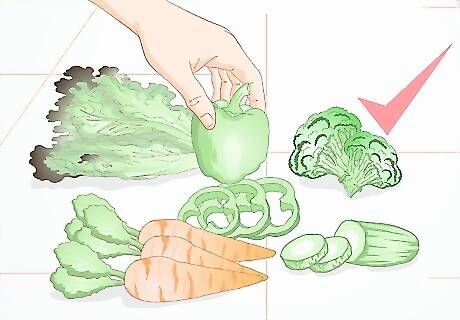
Prepare fresh vegetables. Your bearded dragon will also need a variety of fresh, raw vegetables as a central part of its diet, especially as your pet grows out of the juvenile stage. Make sure you cut the vegetables into smaller pieces that are easier for your bearded dragon to attempt to eat. Some safe vegetables you can provide include: Carrots Zucchini Cabbage Bell peppers Squash Broccoli Celery Cucumbers Kale Pumpkins
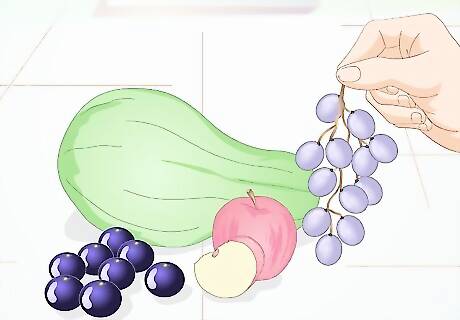
Gather fresh fruits. You should also prepare some fresh fruit for your bearded dragon to eat. Since bearded dragons are omnivores, much of the nutrition in their diet needs to come from plant-based materials, including fruit. However, fruit should constitute the smallest part of your dragon’s diet. Cut the fruit into small, manageable pieces. Some great options for safe fruit to feed your bearded dragon include: Apples Peaches Apricots Blueberries Papaya Melons Grapes Raisins Figs
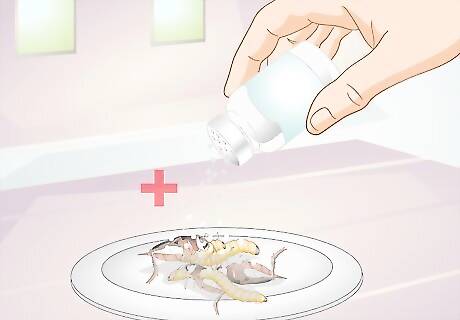
Use calcium supplement powder. A common practice when feeding bearded dragons is to coat the insect specimen with calcium supplements. You can usually find calcium supplement in powder form at most health stores or supermarkets. Just sprinkle a bit of the powder on the insects before feeding them to your bearded dragon. You can use calcium carbonate or calcium gluconate. This should be done once every day for juvenile bearded dragons, and 3-5 times per week for adult bearded dragons.
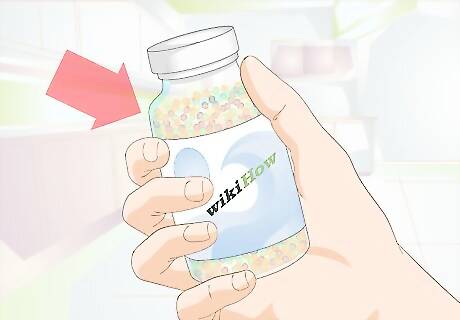
Get commercial bearded dragon food. If feeding your bearded dragon fresh fruits, vegetables, and insects every day seems like too much work, you might consider supplementing or even replacing these items with some commercial bearded dragon food. This kind of food supplement is made of little pellets that are packed with nutrients, usually from dried fruits and vegetables, so your bearded dragon will still get much of the same nutrient content. You can buy jars of this commercial food at most pet stores. For most commercial food options, you’ll need to add a little bit of water to moisten the dried products.
Feeding Your Bearded Dragon
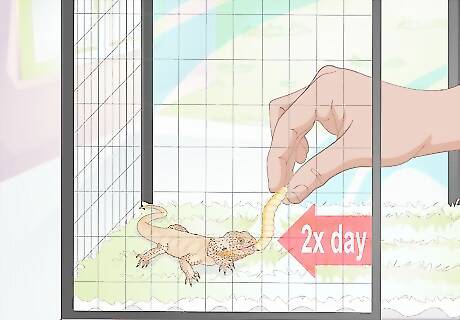
Feed your dragon 2-3 times a day. Once you’ve had your bearded dragon for a few weeks, you’ll get the hang of how much your dragon eats at each feeding. You don’t want to give them too much each time because then the fruit/vegetables will rot in their cages and you’ll have to clean it more frequently. A good rule of thumb is to give your dragon 1/8 cup of food at each feeding. Adult bearded dragons should be fed 2-3 times each day. A grown dragon should eat around 50 crickets or 30 worms per week.
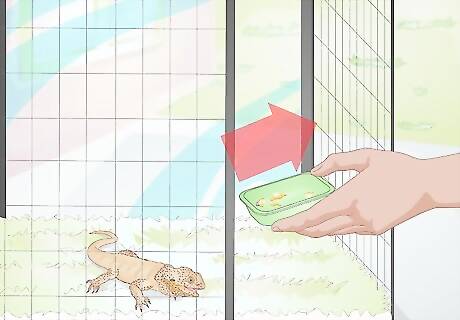
Remove the bearded dragons' food bowl from their enclosure. If you are using a feeding bowl (which is recommended for Mire worms) you should remove the bowl first, so you can do the work without worrying about the Bearded Dragon's actions or possible escape. Make sure you prepare the food out of the bearded dragons' view; if they can see food, they may become hyperactive and do their best to reach the food, even if it means escaping from their enclosure.
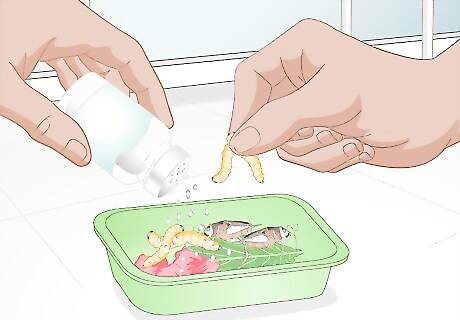
Put the food in a bowl. Bearded dragons, especially young ones, often have a problem with eating too quickly and indiscriminately, so they may accidentally eat some of their cage substrate along with their food if you simply put the food inside their cage. Instead, you should place the food in a small, shallow dish and then put the dish inside the cage when it is time for your dragon to feed. If you are using worms, place them in the bowl, sprinkle calcium powder on them, and place the bowl in the enclosure. The lizard will notice the worms moving, run over, and begin eating. If you are using crickets or locusts, simply dust the crickets and find the opening to the enclosure that is furthest from the bearded dragon. Put the insects in the enclosure; the lizard should run straight at the insects and begin eating.
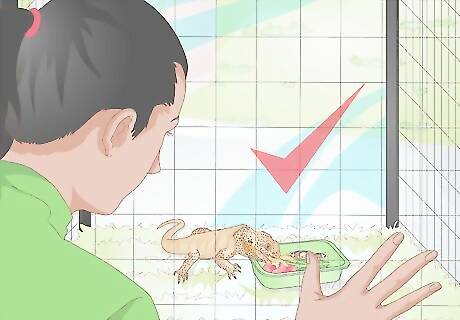
Monitor your bearded dragon while it eats. This is especially important during the first few weeks that you have your pet dragon. You’ll need to watch your bearded dragon eat to make sure it is able to digest all of the food you give it. If it seems to struggle with the size of the food, you may need to provide smaller portions for the next feeding. If your dragon doesn’t eat all of the food within the first 5-10 minutes, you should give it less food during the next feeding to avoid waste and added mess in the cage.
















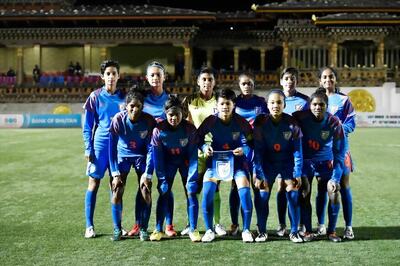
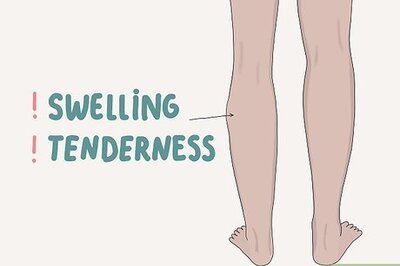
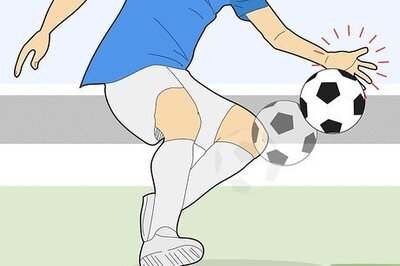

Comments
0 comment